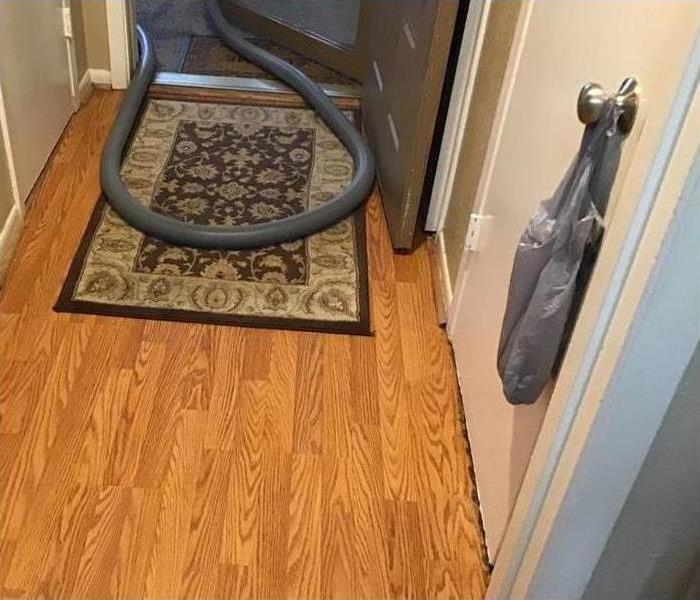Cleaning Water Damage in Floors
12/27/2023 (Permalink)
Cleaning water-damaged floors is a critical step in the restoration process to prevent further damage and potential health issues. The approach to cleaning will depend on the type of flooring you have. Here are general guidelines for cleaning water damage from different types of floors:
Safety First:
- Turn Off Power: Before beginning any cleanup, ensure that the power to the affected area is turned off to prevent electrical hazards.
- Wear Protective Gear: Use personal protective equipment such as gloves, boots, and, if necessary, a mask to protect yourself from potential contaminants in the water.
Remove Standing Water:
- Use a Wet/Dry Vacuum: Extract as much standing water as possible using a wet/dry vacuum. Make sure to use a vacuum designed for water removal.
- Mop and Towels: Mop the remaining water and use absorbent towels or rags to soak up moisture from the floor.
Ventilation:
- Promote Air Circulation: Open windows and doors to increase ventilation and aid in the drying process. Use fans and dehumidifiers to reduce humidity levels.
Carpeted Floors:
- Extract Water from Carpet: Use a carpet extractor or wet/dry vacuum specifically designed for carpets to remove water.
- Lift and Remove Carpet: If possible, lift the carpet to allow air circulation and expedite drying. Remove the carpet padding, as it is difficult to dry and can harbor mold.
- Clean and Disinfect: Clean the carpet with a carpet cleaner and disinfect the area to prevent mold growth.
Hardwood Floors:
- Remove Water: Wipe down the hardwood floors with a dry, absorbent cloth or towel to remove as much water as possible.
- Gently Clean: Clean the floor with a mixture of mild soap and water. Avoid using excessive water, as it can seep into the wood and cause damage.
- Dehumidify: Use dehumidifiers to remove excess moisture from the air and the wood.
Tile and Vinyl Floors:
- Remove Water: Wipe down the surface with absorbent towels or rags to remove standing water.
- Clean with Mild Detergent: Clean the floor with a mixture of mild detergent and water. Use a soft brush or mop to avoid scratching the surface.
- Dry Thoroughly: Ensure that the grout lines are dry, as moisture in the grout can lead to mold growth.
Concrete Floors:
- Remove Water: Use a wet/dry vacuum to extract water from the concrete floor.
- Clean and Disinfect: Clean the floor with a mild detergent or a mixture of bleach and water to disinfect the surface.
- Dry Completely: Ensure thorough drying by using dehumidifiers and promoting air circulation.
Check for Mold:
- Inspect for Mold Growth: After cleaning and drying, inspect the area for any signs of mold growth. If mold is present, take appropriate measures to address it promptly.
- Consider Professional Inspection: For extensive water damage or if you suspect hidden moisture, consider hiring professionals for a thorough inspection and remediation.
Monitor and Prevent Future Issues:
- Continue Monitoring: Keep an eye on the affected area for any signs of lingering moisture or new issues.
- Prevent Future Water Damage: Identify and address the root cause of the water damage to prevent future incidents. This may involve fixing leaks, improving drainage, or installing protective measures.
Always follow the manufacturer's guidelines for cleaning and maintaining specific types of flooring. If the water damage is extensive or you are uncertain about the best approach, consider seeking professional assistance to ensure a thorough and effective cleanup.




 24/7 Emergency Service
24/7 Emergency Service
